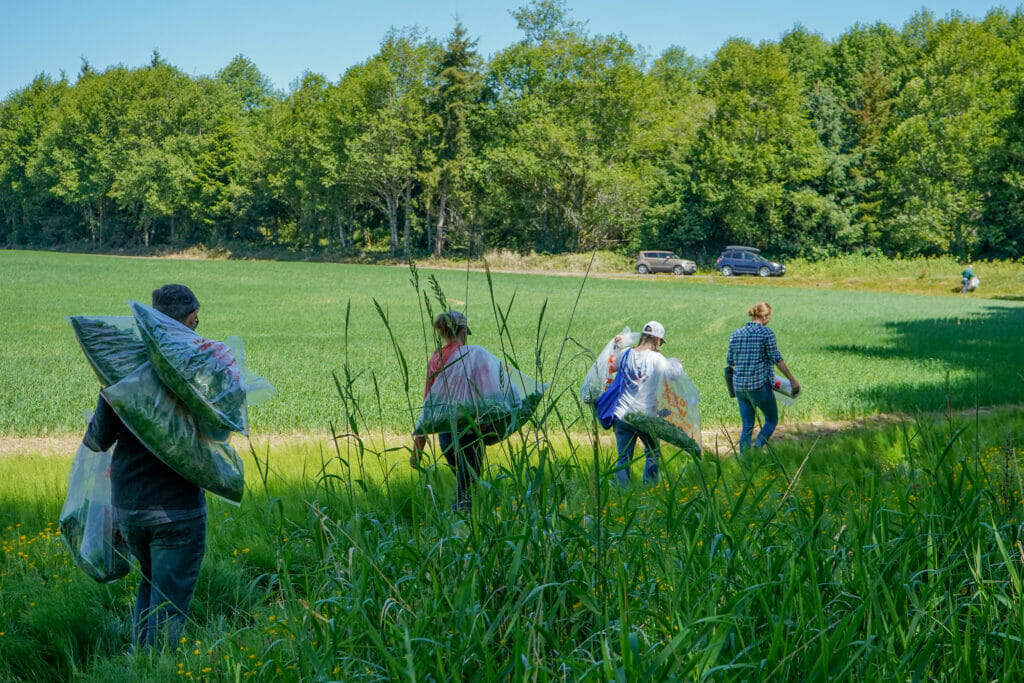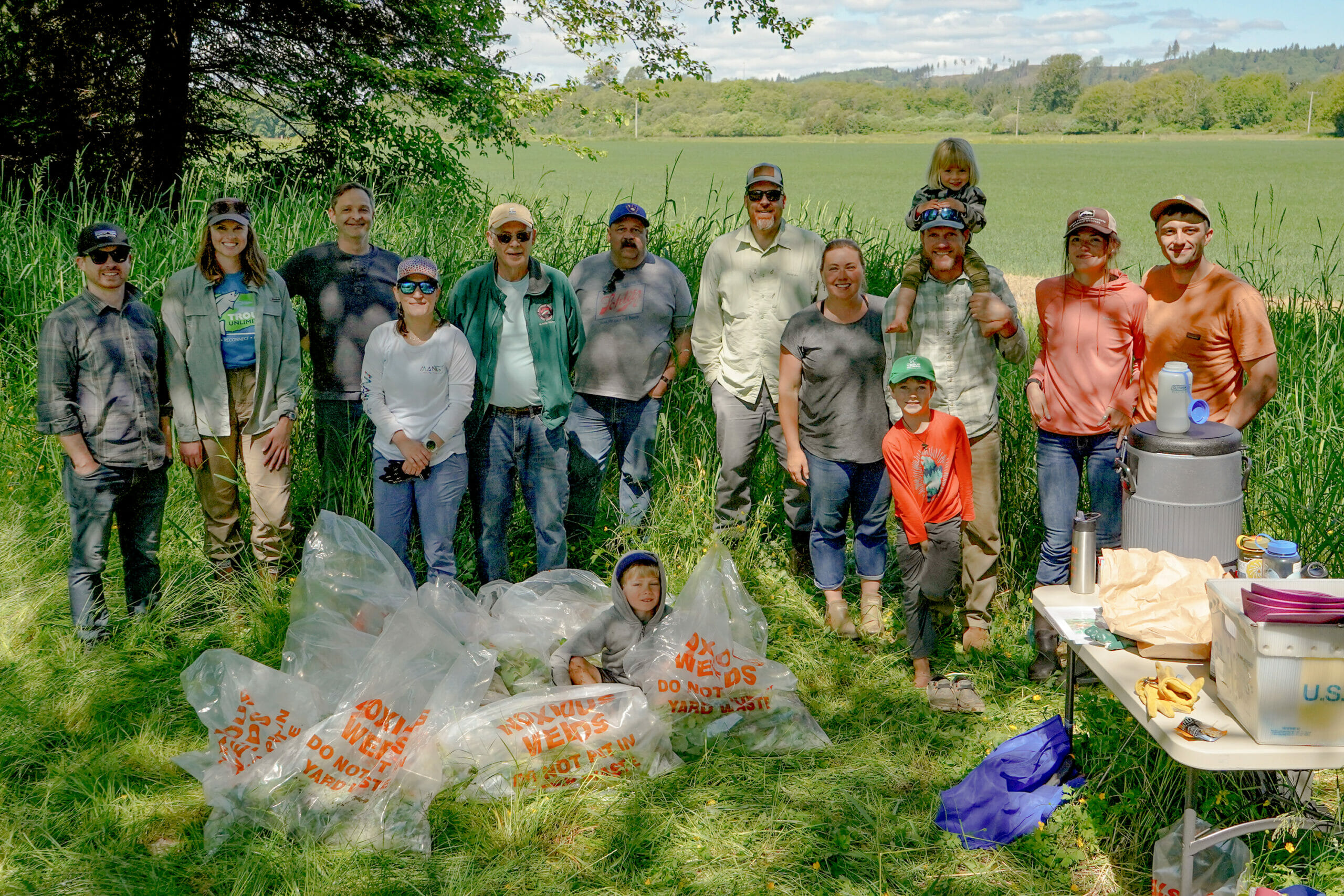TU volunteers remove invasive weeds at a restoration site in Washington’s Chehalis River Basin
On a sunny Saturday morning in early June, a group of TU staff and volunteers gathered at Camp Creek, a tributary of Washington’s Chehalis River, to help TU’s Alex Gustafson remove Spotted Jewelweed from riparian habitat at the site of a recent fish passage project. The stewardship event was organized by the Olympia TU Chapter.
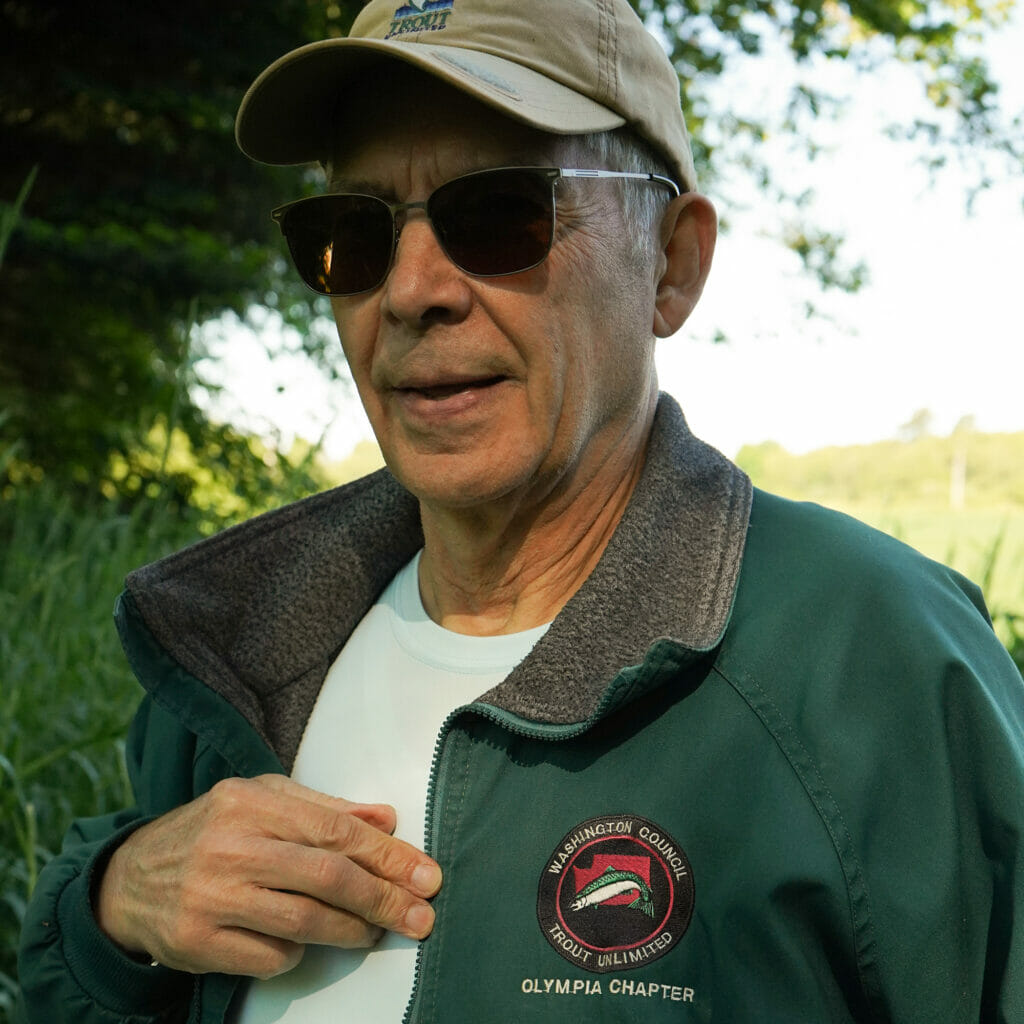
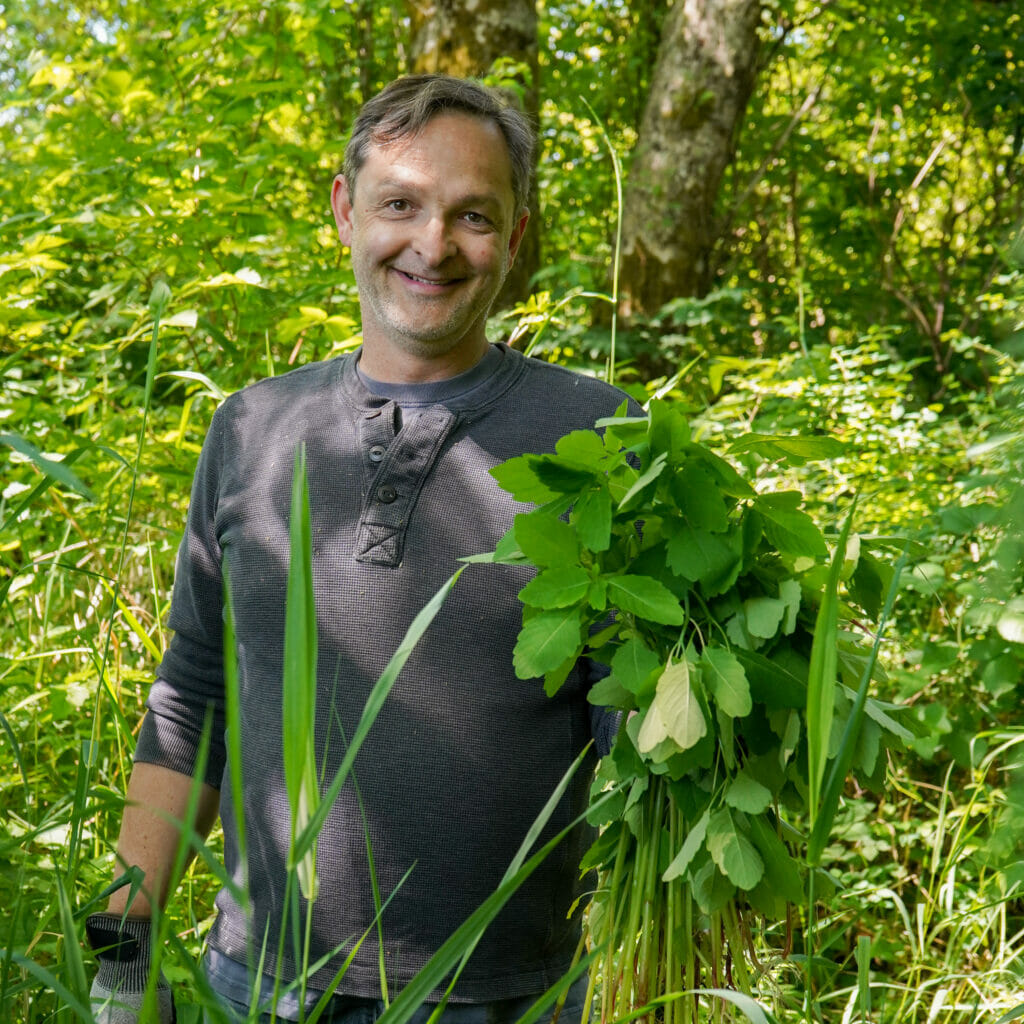
The crew was joined by Kiley Smith, the Washington State University Extension Grays Harbor Noxious Weed/Small Farms coordinator, who helped identify the invasive species and hauled trash bags to the incinerator when the work was done. Even the landowner, Mark Tomschek, a great partner in the restoration project, showed up to help pull weeds.
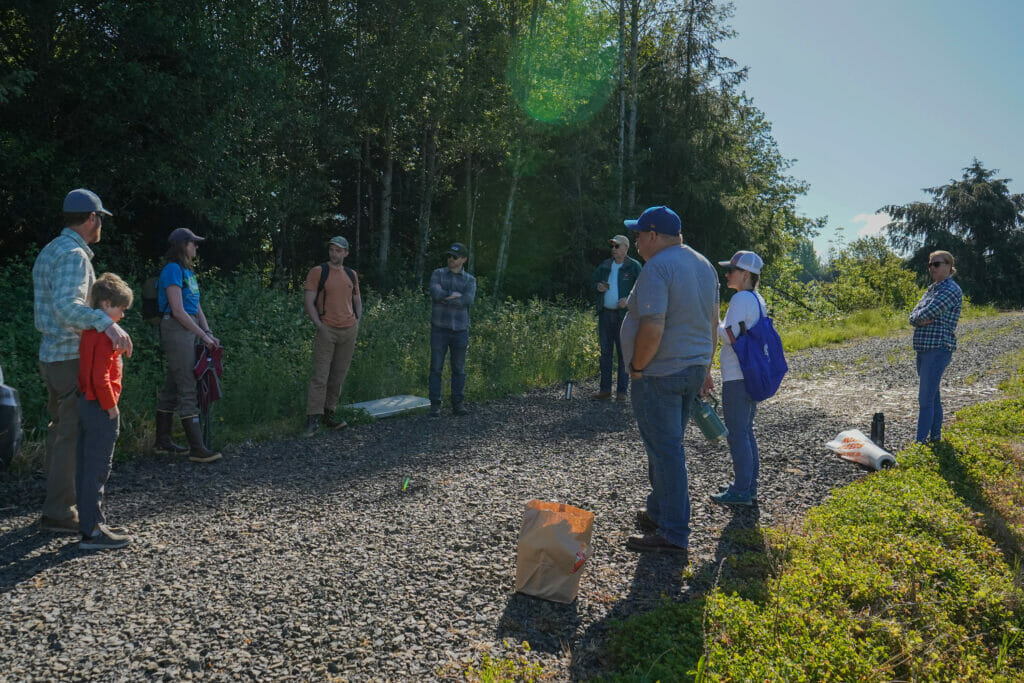
Camp Creek and Spotted Jewelweed
Camp Creek joins the Chehalis River near Montesano, Washington and is low enough in the basin to have tidal influence. Two years ago, TU staff removed a culvert and decommissioned a road on the portion of the creek running through the property. A new road and bridge were installed upstream of the original site. The project reconnected 11.5 miles of habitat for coho salmon and sea run cutthroat, a little over five miles of chum salmon habitat and nearly ten miles for steelhead. At the time, Camp Creek was one of the highest priority fish passage projects in the basin.
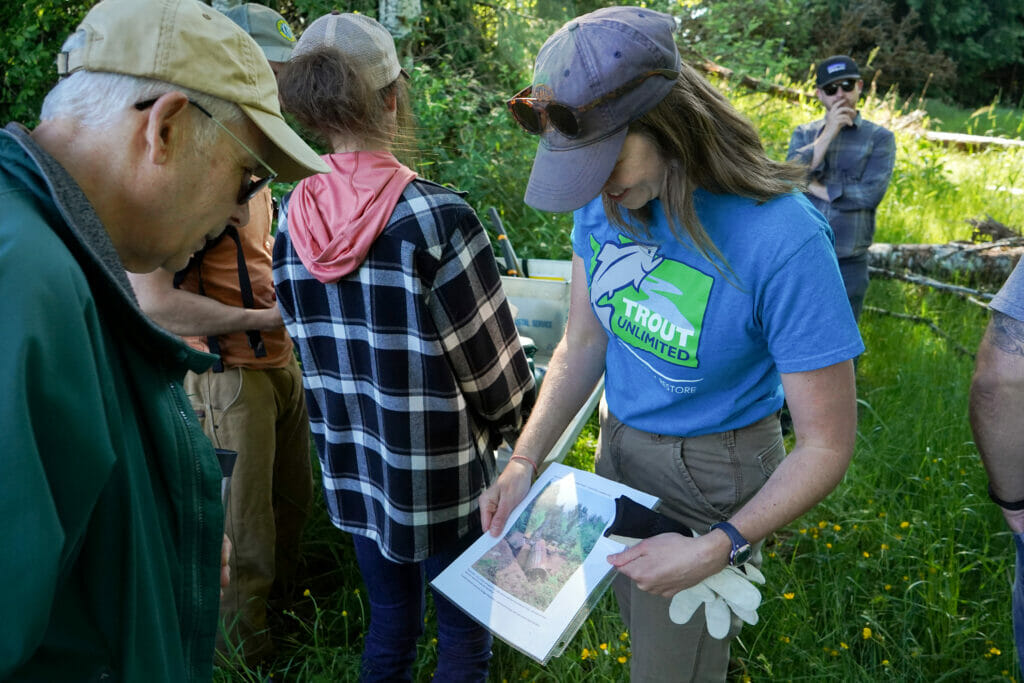
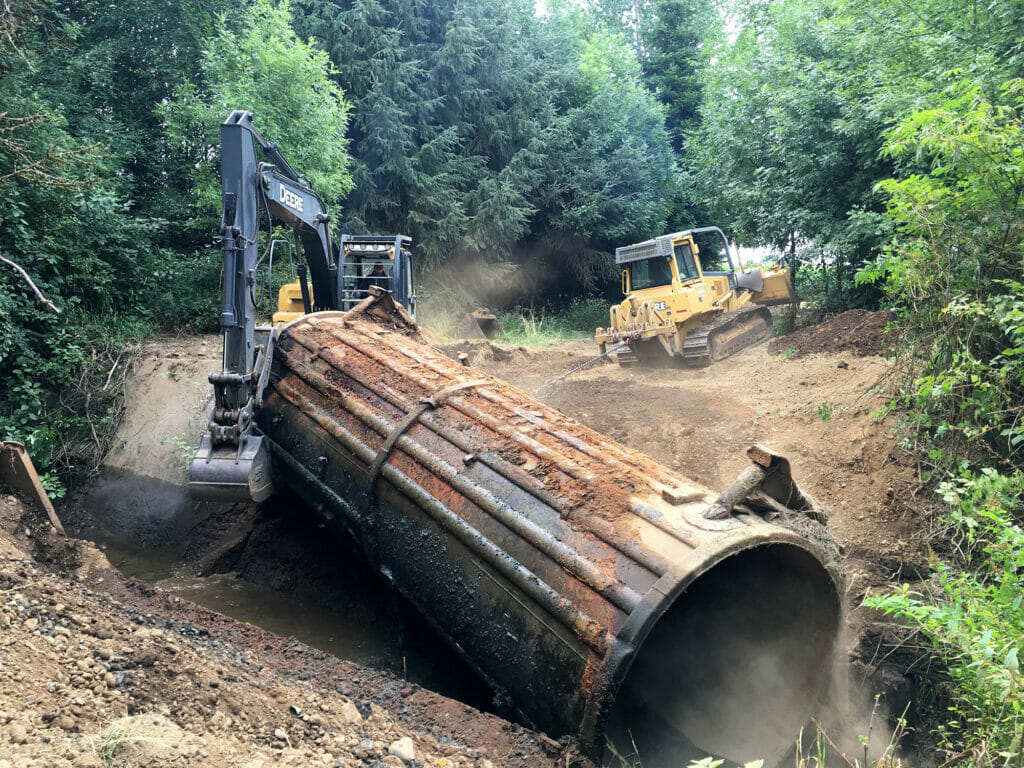
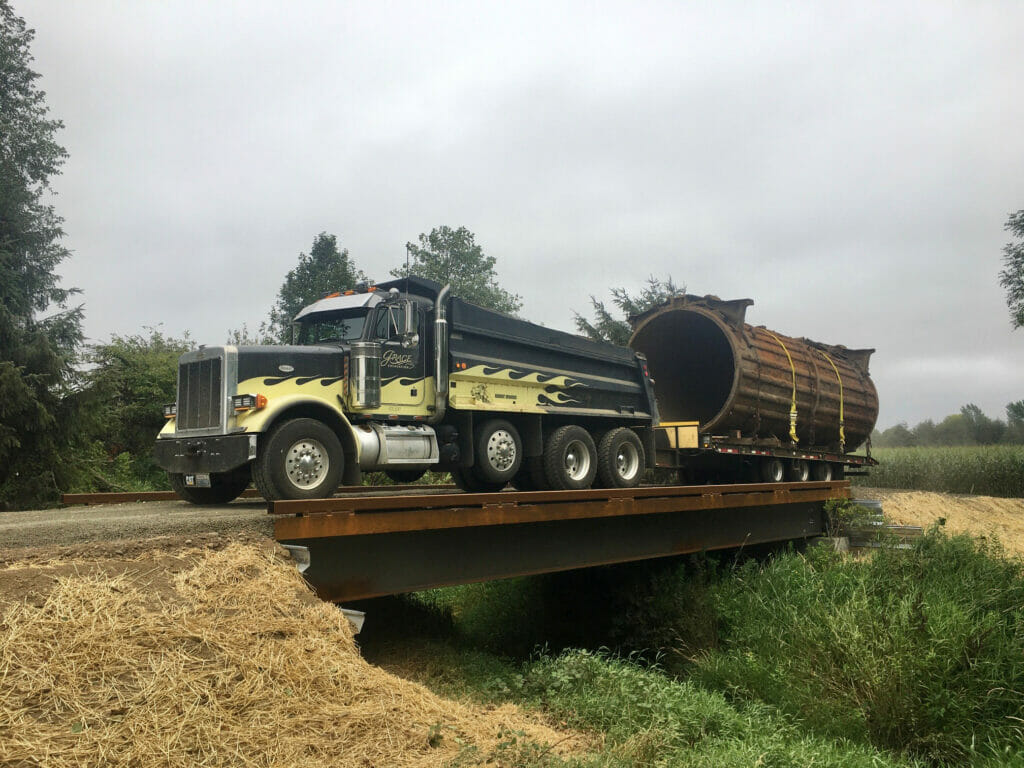
Salmon and trout regained an important migration corridor, but to get the full benefit of restoration, a site like this needs some ongoing maintenance in the years after the heavy equipment leaves. Project managers are fostering healthy riparian habitat along the creek by planting native species and removing invasives. One of the invasives that can suppress recovery of native plant communities in coastal Washington watersheds is Spotted Jewelweed.
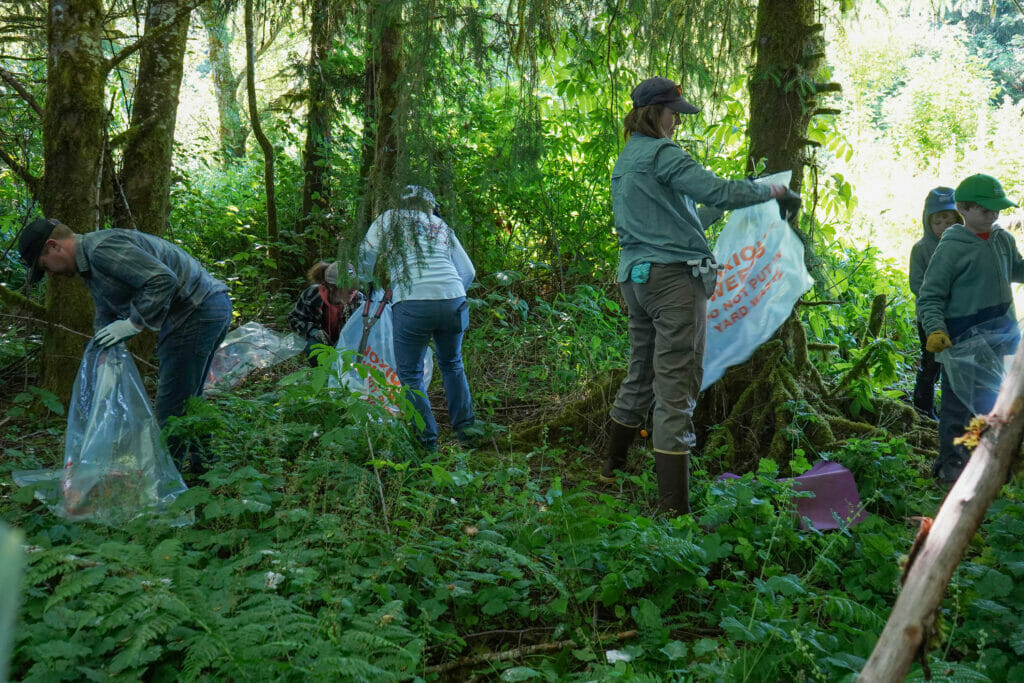
Spotted Jewelweed, sometimes known as Spotted Touch-Me-Not, can grow up to five feet tall and fling its seeds 4 to 6 feet. It spreads aggressively, forming thick carpets that outcompete other plants and prevents the diverse mix of native species required for high-functioning, year-round riparian habitat. It is native east of the Rocky Mountains, but can hybridize with, and subsequently replace, Washington’s native Jewelweed.
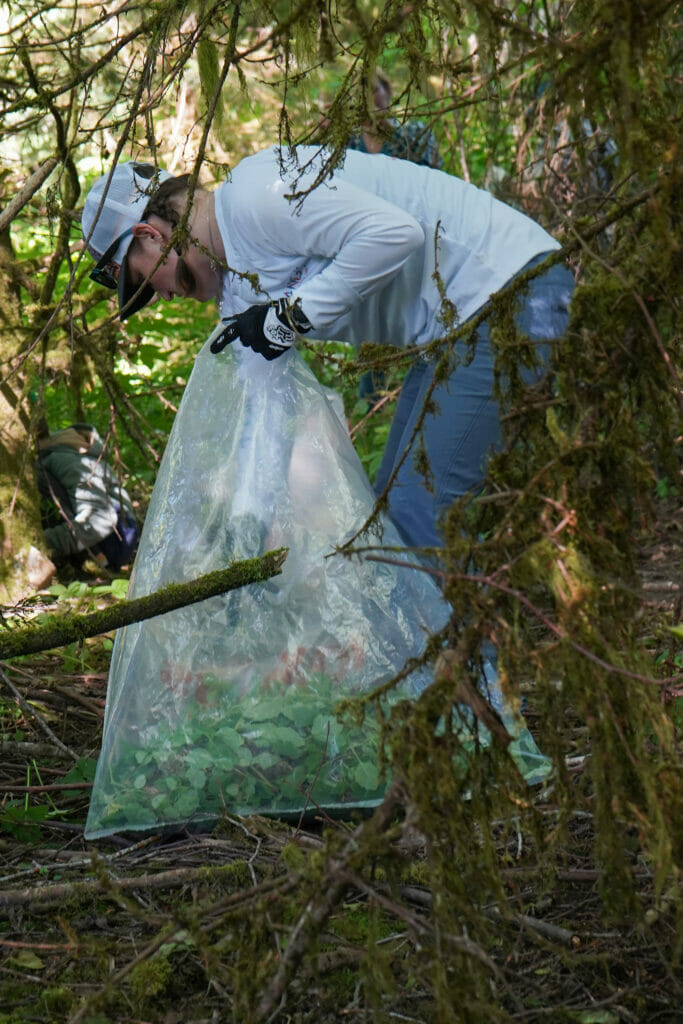
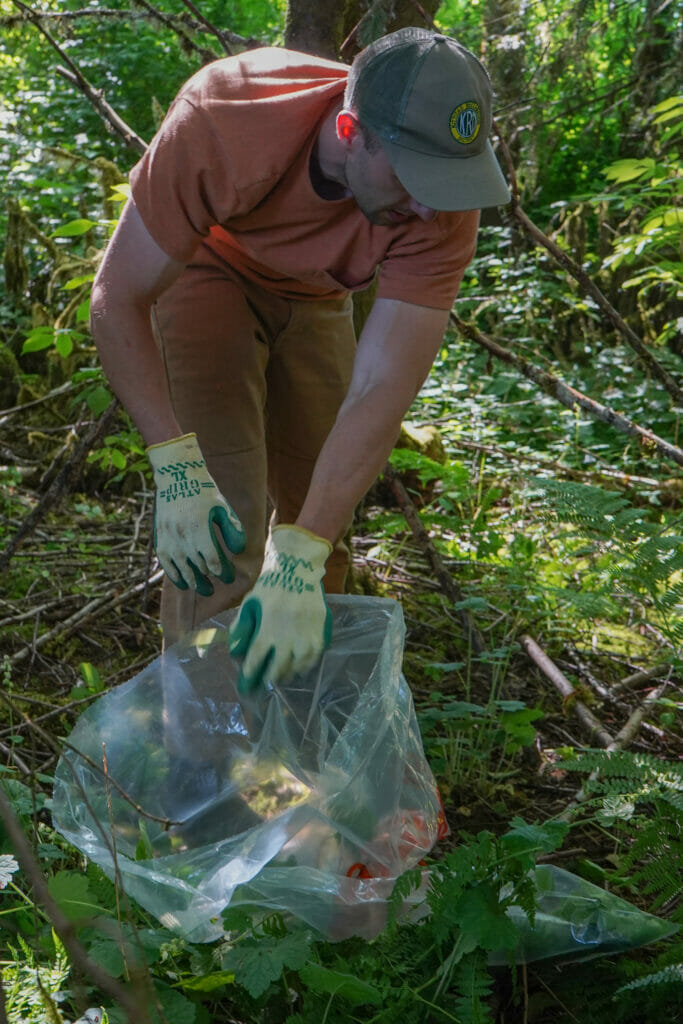
During the restoration project, TU staff took care to not transplant invasive species. They carefully inspected vehicles entering the construction site and had requirements to use weed free materials. But Spotted Jewelweed has been spreading through the lower Chehalis Basin and found its way to the Camp Creek site.
Fortunately, Spotted Jewelweed is an annual plant with a shallow root system. When it is small, it is easy to pull out, and if you catch it early in the season, real progress is made by removing the plants before they go to seed.
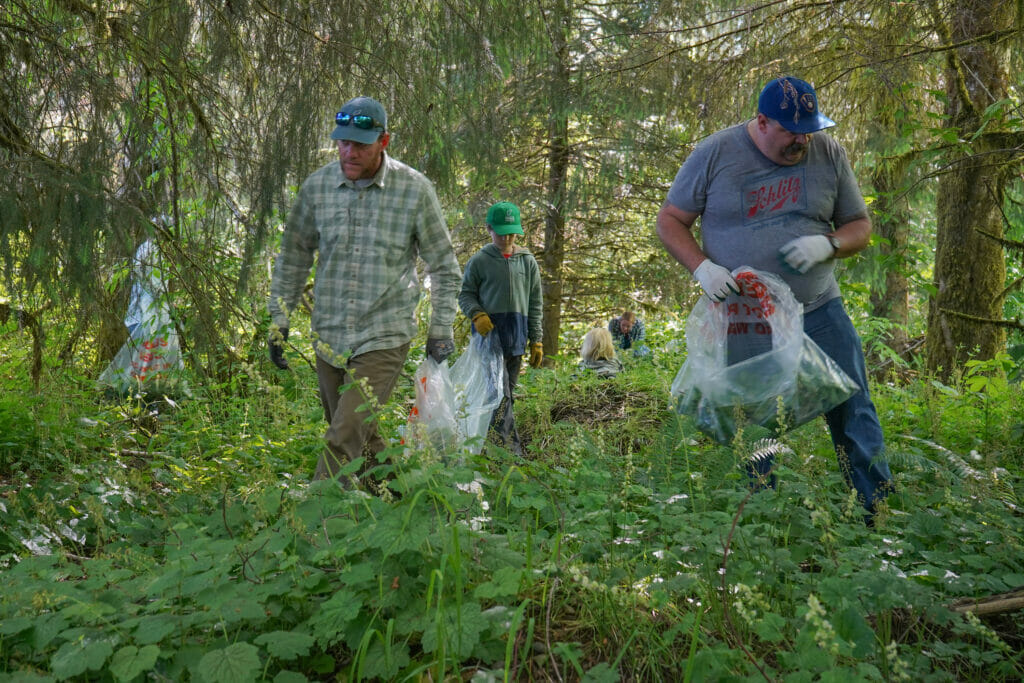
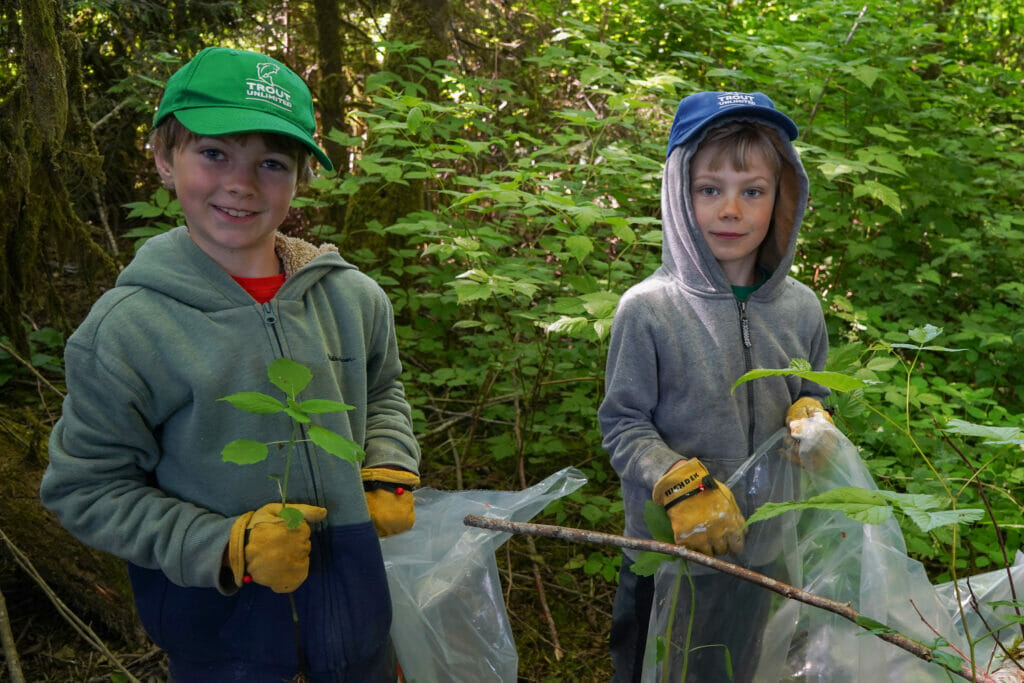
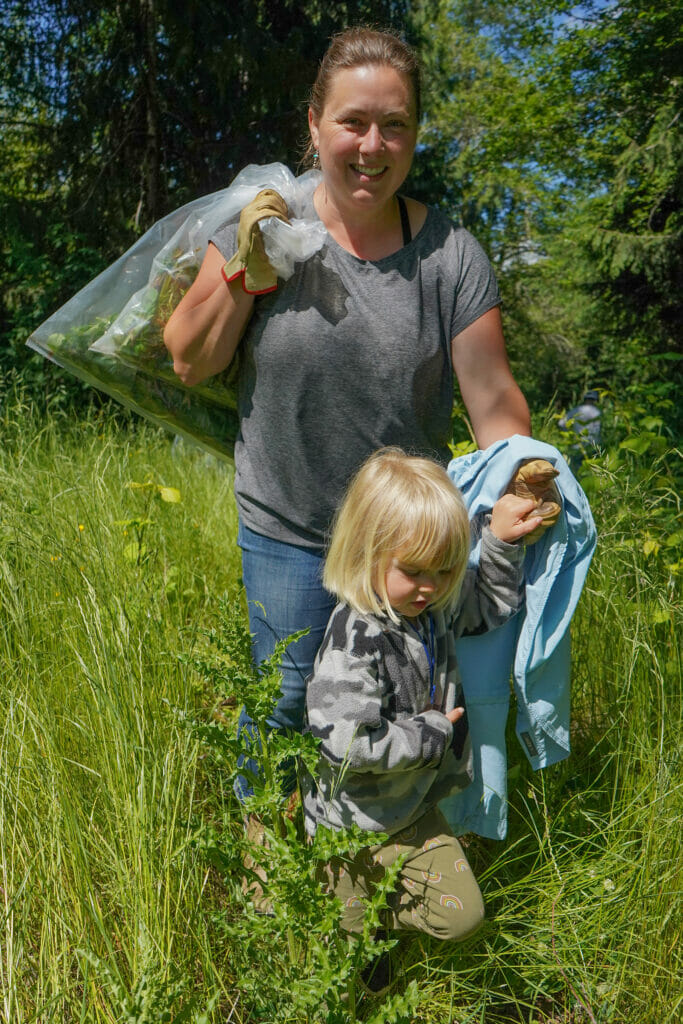
TU Staff and Grassroots Working Together
Pulling weeds might not be everyone’s first idea of a good time, especially those of us who regularly fall behind with our own yard and garden chores at home, but this event was a great time. It was also a great example of coordination between TU staff and grassroots.
It was fascinating to hear TU’s Luke Kelly and Alex Gustafson describe the work they’d done on the restoration project and the importance of ongoing stewardship at the site. Likewise, it was great to trade notes and spend time with dedicated volunteers putting in the hours helping their local rivers and native fish.
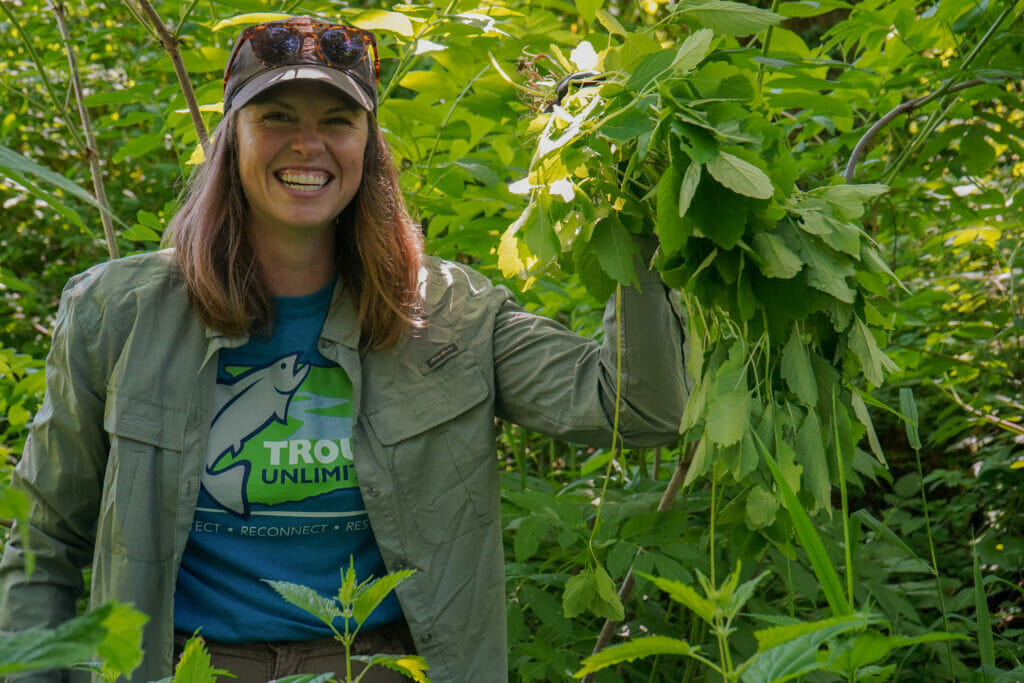
TU staff are planning and leading a great deal of restoration work in the Chehalis Basin. Whenever possible, the Olympia Chapter is hoping to rally volunteers with opportunities to get their hands dirty and support this important work.
